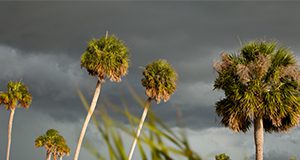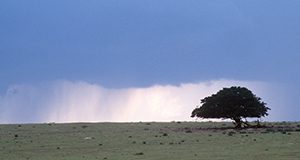Kondisyon meteyo yo ka jwe yon gwo wòl nan siksè oswa echèk aktivite agrikòl yo. Kiltivatè yo rekonèt sa e se sak fè yo toujou swiv bilten ak previzyon meteyo pou ka ede yo pran desizyon nan sa ki gen pou wè ak irigasyon, pwoteksyon kont fredi ansanm ak anpil lòt desizyon. This new 4-page publication is the Haitian Creole version of EDIS document AE532, Guidelines for Establishing and Maintaining Farm-Based Weather Stations in Haiti. Written by Caroline G. Staub, William Eisenstadt, William Blanc, Nicole Monval, Clyde W. Fraisse, William Lusher, George Braun, and Lee Staudt, and published by the UF/IFAS Department of Agricultural and Biological Engineering, May 2019.
http://edis.ifas.ufl.edu/ae531
Tag: Caroline G. Staub
Guidelines for Establishing and Maintaining Farm-Based Weather Stations in Haiti
Weather can significantly influence the success or failure of agricultural enterprises. Monitoring weather conditions can provide critical decision-making information. This new 4-page publication provides Haitian farmers with basic guidelines for installing and maintaining an on-farm weather station. Written by Caroline G. Staub, William Eisenstadt, William Blanc, Nicole Monval, Clyde W. Fraisse, William Lusher, George Braun, and Lee Staudt, and published by the UF/IFAS Department of Agricultural and Biological Engineering, May 2019.
http://edis.ifas.ufl.edu/ae532
AgroClimate Crop Season Planning Tool: Reducing the Risk of Extreme Weather Events During Key Stages of Crop Development
This 5-page publication details a new tool available to growers and Extension professionals to manage risks related to climate during seasonal planning stages. The Crop Season Planning tool is a climate-based tool that enables growers to plan planting strategies that will minimize risk to climate extremes based on historical climate data at their location. Written by Caroline G. Staub, Daniel Perondi, Diego Noleto Luz Pequeno, Patrick Troy, Michael J. Mulvaney, Calvin Perry, Brian Hayes, Willingthon Pavan, and Clyde W. Fraisse, and published by the UF/IFAS Department of Agricultural and Biological Engineering, March 2018.
http://edis.ifas.ufl.edu/ae525

